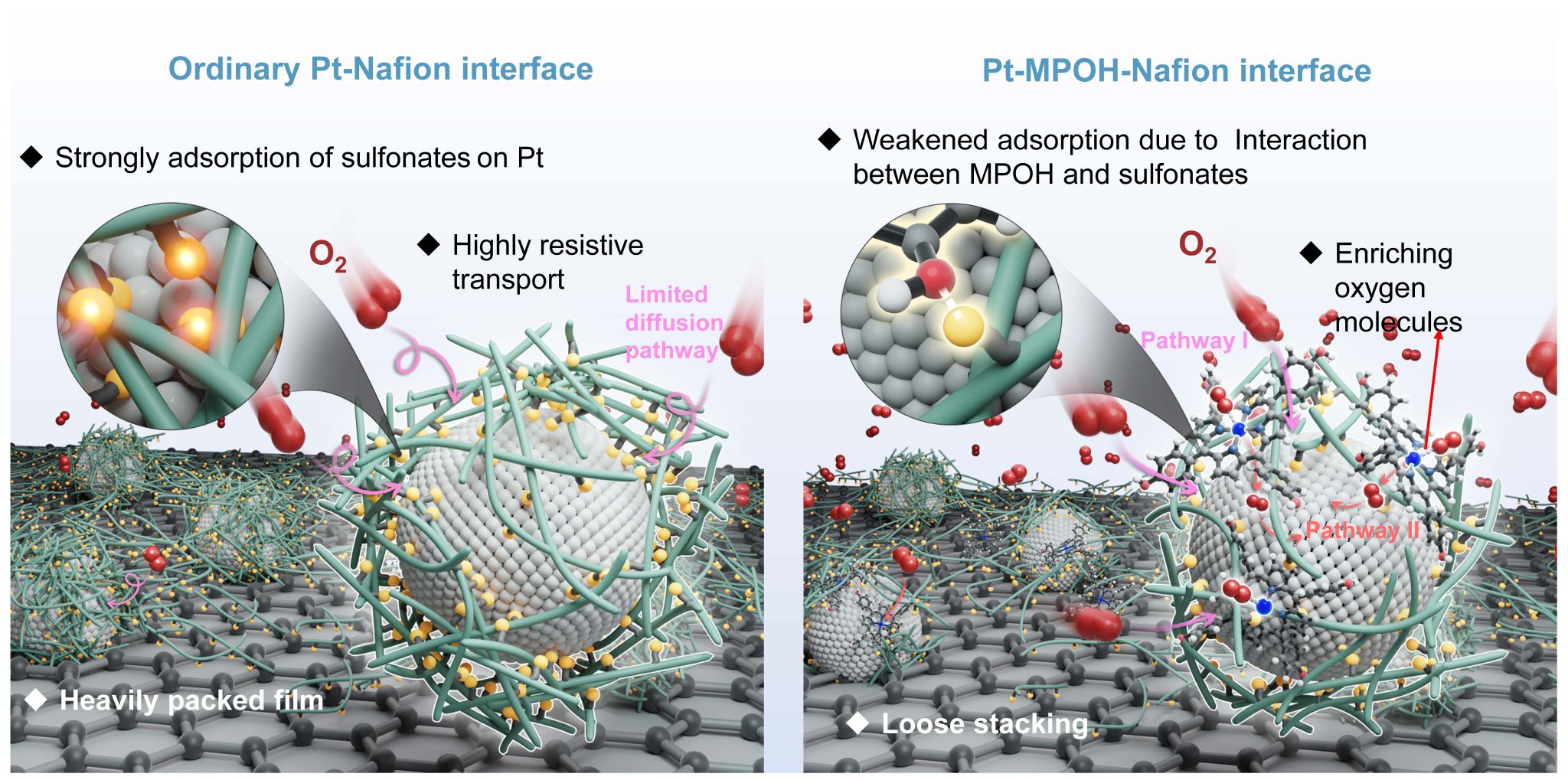The oxygen reduction reaction (ORR) in proton exchange membrane fuel cells (PEMFCs) is severely hindered by the strong adsorption of sulfonate groups in perfluorinated sulfonic acid (PFSA) ionomers on Pt, which not only blocks the catalytic sites, but also induces dense PFSA films resisting O2 toward Pt. Herein, we address this issue with hydroxyphenyl metal porphyrins (MPOHs) as an additive in cathodic catalyst layers (CCLs). Detailed physical and electrochemical characterizations and molecular dynamics simulations reveal that MPOHs dually enables ORR-favorite Pt/ionomer interfaces, by forming hydrogen-bonding networks with hydronium and sulfonates to break the sulfonate-Pt interaction and enlarge the O2-diffusive hydrophilic domains in ionomer films, and enriching and carrying O2 molecules through adsorption/desorption processes. Consequently, the fuel cells with MPOHs-added CCLs exhibit marked reduction in the local oxygen transport resistance of ionomer films and notable improvements in the output power accordingly, with CuPOH, which is suggested by density functional theory calculations as an optimal O2 carrier due to the near zero O2 adsorption free energy, showing more pronounced improvement. These results should inspire more molecule-level strategies to boost PEMFC efficiency through regulating Pt/ionomer interfaces and stimulate electrode optimization-oriented materials development in broad areas spanning various electrochemical energy technologies.
https://doi.org/10.1039/D4EE04320K
